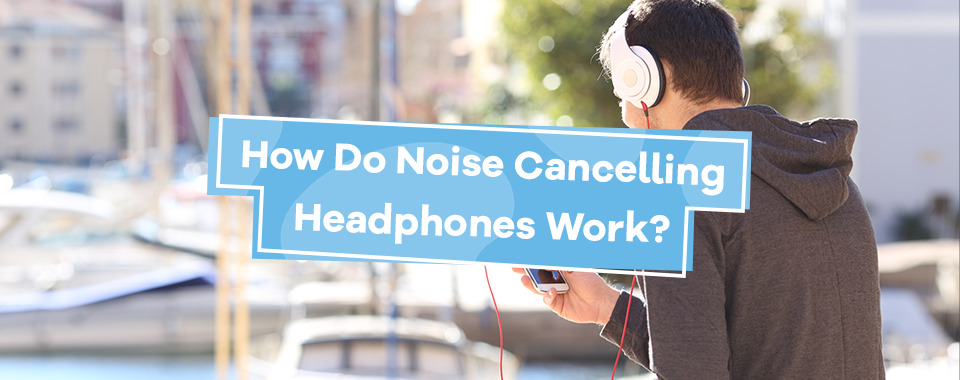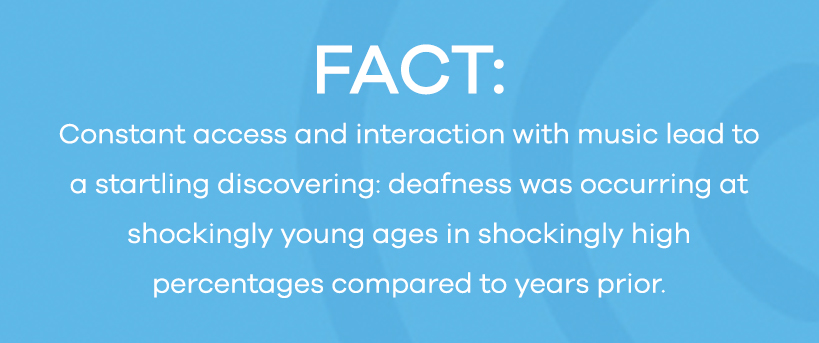
Sometimes, you just want a little peace and quiet. But blocking out noises can be tough.
What do you do when you want to enjoy your coffee shop latte without overhearing the loud conversation three tables over? Or when your neighbor’s hired roofers, tree trimmers and landscapers work all weekend, and you’re trying to enjoy your days off? That’s where noise-cancelling headphones come into the picture.
You have plenty of options when it comes to choosing a pair of noise cancellation headphones. However, before you make your selection, you probably want to answer the most pressing questions of all:
- What is noise cancelling?
- How do noise-cancelling headphones work?
Understanding the Scientific Principle Behind Noise
Noise is a rather subjective term. After all, one person’s noisy music could be another person’s favorite song. Still, all noise is basically sound.
You probably learned in school all about sound and sound waves. Most diagrams illustrate the principle of sound with waves on a grid. The waves rise above and dip below a baseline. The louder and more intense the sound, the closer the waves are together — or the higher the frequency of the waves. The quieter the sound, the farther apart the waves are, and the lower the frequency of the waves.
Does sound actually travel in this type of wave pattern? Somewhat, although the wave diagram is best-suited as a visual explanation. When you hear noise, you’re actually experiencing a brain phenomenon. As the air pressure changes due to slight variations in the ripples of moving particles, your brain interprets the changes as different noises. Depending on the noise, you’re able to identify it based on your experiences.
How Can Headphones Cancel Out Noise?
Although you can create a barrier against the sounds coming into your brain through your ears, not all barriers are effective. That’s why you can hear traffic noises when you’re walking on the sidewalk and listening to a podcast through regular earbuds.
Noise cancellation headphones are totally different. They aim to neutralize ambient sounds so all you hear is what’s coming through your headphones — or, you might hear nothing at all, theoretically, if you’re just wearing the headphones and not listening to audio.
How can you neutralize sound? Think back to the visual diagram of the sound waves. Noise cancellation headphones use technology to generate counter sound waves based on incoming sounds. These counter sound waves are the opposite of the incoming sound waves. The result is that the sound is counterbalanced and neutralized.
Do Noise Cancellation Headphones Always Work?
Like any developing product, noise cancellation headphones aren’t perfect. The technology is still relatively new, although inventors have made terrific progress. Obviously, you’ll want to test out various noise cancellation headphones before choosing the one for your needs.
Headphones: A Health Hazard or a Sound Solution?
As the invention of MP3s and iPod players annihilated Walkmans, a red flag was thrown in the Otorhinolaryngology medicinal field. It’s so easy to sync your digital device to your music source – Spotify, iTunes, Pandora, Amazon – you never have to unplug. Not even to stop, turn the tape around and hit play.
This constant access and interaction with music lead to a startling discovering: deafness was occurring at shockingly young ages in shockingly high percentages compared to years prior.
There were (and are) several contributing factors; it’s not always the music itself to take into consideration.
Primarily the duration and decibel are what put your health at risk.
- How long are you listening to the music?
- How loud are you listening to your music?
As die-hard enthusiasts of particular genres and artists, we recognize that very specific volumes may do more justice to the song, so adjusting to the recommended 60% of the maximum volume can be hard to adhere to.
We know exposure to any unwarranted or repetitive noise ultimately has some frustrating repercussion. Listen to a high-pitch whistle; we’ll end up with a “phantom” high-pitch whistle in our ears. In this case, however, the more music you listen to at high decibels won’t leave you hearing the music. It will leave you hearing next to nothing. Soon sounds will become muffled; you could hear buzzing, ringing and the NEED to increase the volume on everything will become prevalent.
To better enhance your listening experience and those around you – because while you want to enclose yourself in your personal music escape, others are invited through unintentional eavesdropping. What did you think would happen when you kept increasing the volume? Noise canceling headphones are a great solution for you to experience that individual concert quality without the need to turn it up. With careful selection, the headphone’s technology does it for you with its surround sound… blocking. Block, cancel out any interfering noise and you’ll realize how much your volume contributed to your solo show’s high intensity.
At the end of the day, if your ears have been secluded in earbuds or headphones like they’re ear muffs on the North Pole, you could really be risking your health. But not only does turning down and turning off give you a chance to enjoy the music of conversation or white noise, but it also preserves your hearing – which prolongs your probability to listen to music ten, fifteen, twenty years down the road.
Learn More About Headphones
Tips for Choosing Noise Cancelling Headphones for Home Office








